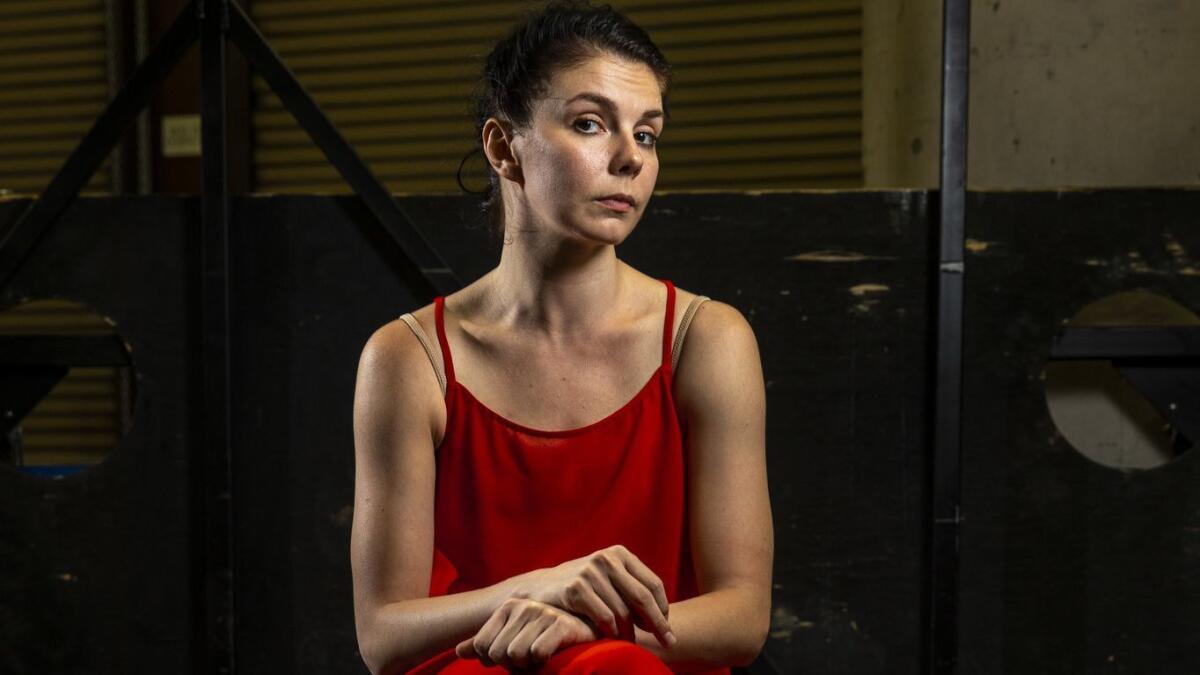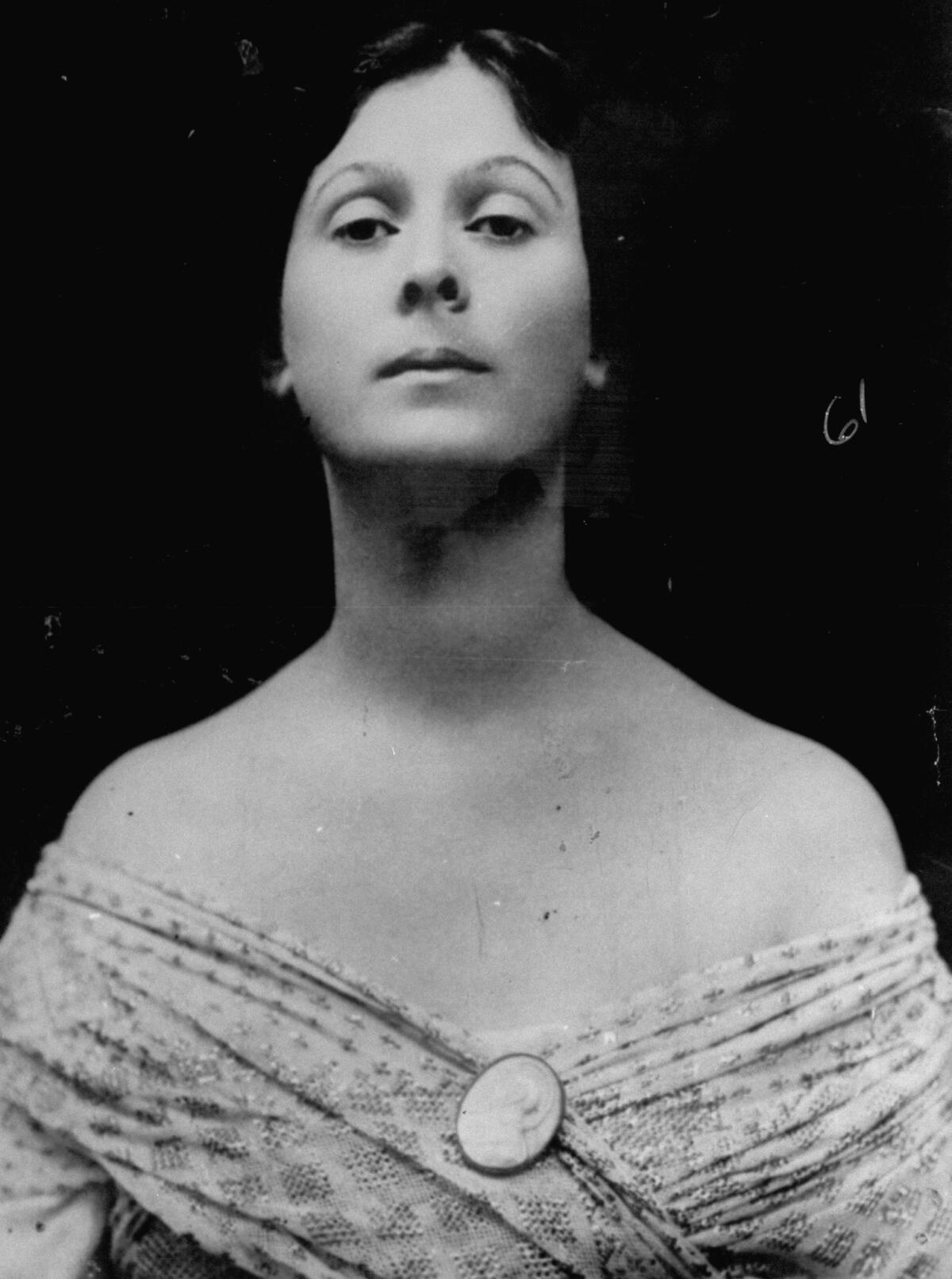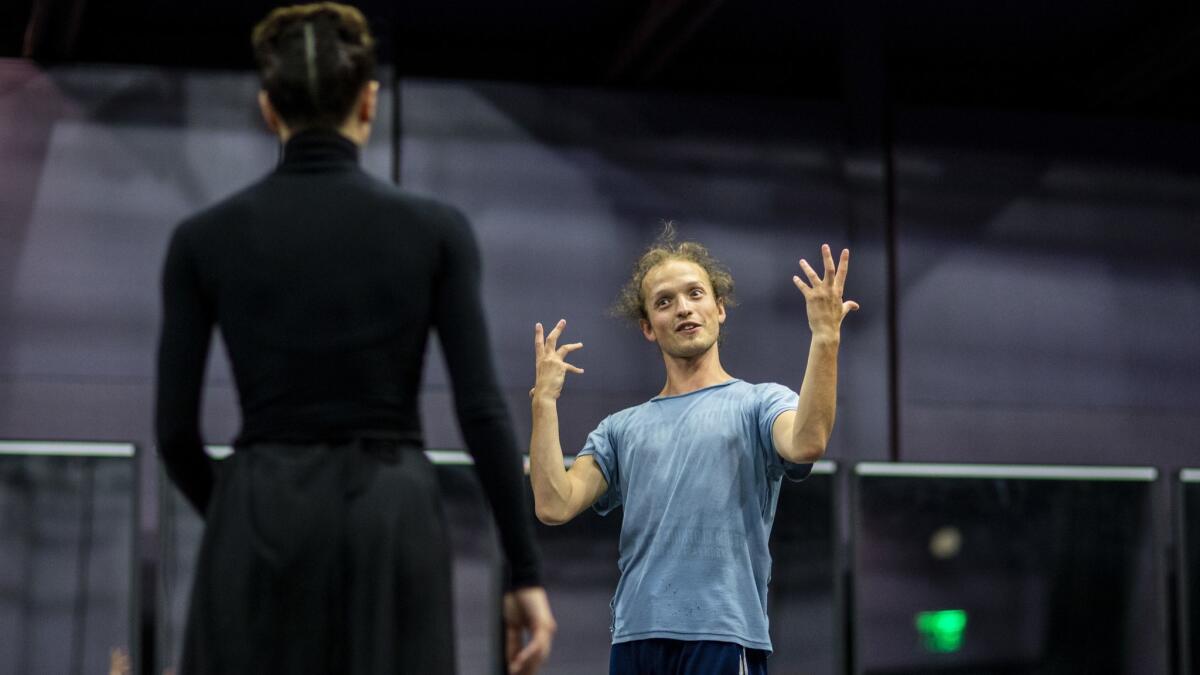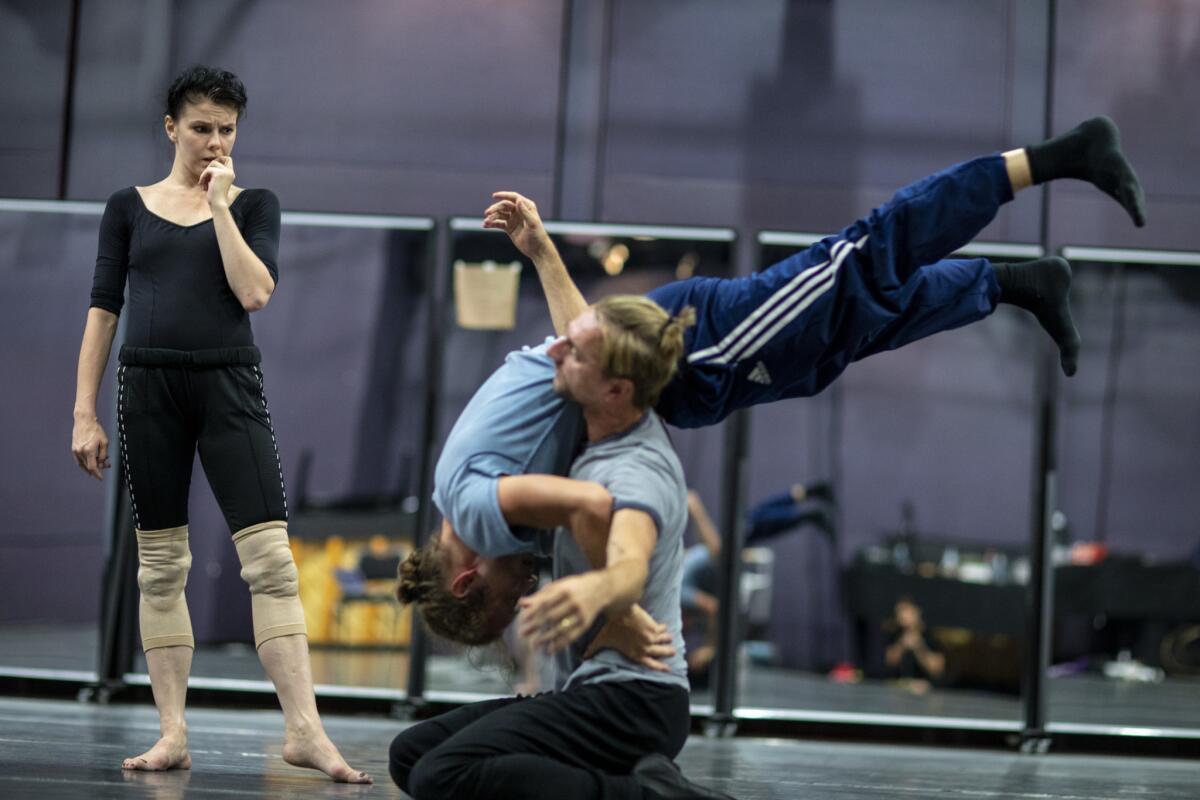A ‘Cinderella’ without Cinderella? Ballerina Natalia Osipova will make the music sing ‘Isadora’

- Share via
The new “Isadora” starring Russian ballerina Natalia Osipova is based on the life of Isadora Duncan, often called the mother of modern dance.
Its origin story, however, starts with “Cinderella.”
The fairy tale about a golden-hearted scullery maid who escapes her life of oppression by marrying a prince is a far cry from the biography of the free-spirited Duncan, who led a revolution on the dance stage.

Enter Osipova, 32, a principal dancer with the Royal Ballet in London and guest artist with American Ballet Theatre in New York, who has conquered most of the leading roles in the classical repertory. Except, it turns out, Cinderella.
Osipova adores the 1945 ballet score written by Sergei Prokofiev, so the ballerina approached Vladimir Varnava, a Russian choreographer with the St. Petersberg-based Mariinsky Theatre, and proposed that he create a production for her. An award-winning dancer in his own right, Varnava had known Osipova for years and was eager to work with her. But he wasn’t sure he could come up with a “Cinderella” that would match or surpass the multitude of ballets that already exist. So he presented her with an unusual idea.
“Vladimir called and asked me, ‘What do you prefer, what do you like more: the story of Cinderella or the score?’ I told him right away I was more excited about the music than the story. And then he shared with me the idea of ‘Isadora,’ to make a story based on her life and set it to the score of the ‘Cinderella’ ballet.”
Osipova had just moved into an apartment in London and, before Varnava called, she had hung up three pictures of Duncan. “It was a sign,” Osipova recalled thinking. “This is my destiny. I should say ‘yes.’ ”
And she did. The dance-theater work premieres Friday through Sunday at the Segerstrom Center for the Arts, which is co-producing it with Ardani Artists.

Varnava and the international cast of 20 dancers have been rehearsing in a Segerstrom studio since early July. (Among them was the recently retired ABT principal Veronika Part, who as the ballerina will be the only one wearing pointe shoes; other women will wear flat dance shoes or, in the case of Osipova, occasionally dance barefoot because Duncan was famous for that.)
During a recent break, the choreographer made it clear that he is not creating a documentary about Duncan, who was born in San Francisco in 1877 and whose life was filled with artistic glories as well as profound tragedies, including the drowning of her children and her own accidental strangulation in 1927.
Rather, Varnava said, he wants this piece to highlight the artistry that made Duncan so radical for her time, including her freedom of expression, her improvisation and her rejection of classicism’s rules. The ballet does, however, include details of her personal life, including her brief marriage to Russian poet Sergei Yesenin.
“For me the most important thing in this story is the conflict between great artist and very unhappy person,” said Varnava, 30, who was a member of the Republic of Karelia’s opera house ballet company but whose primary training was in folk dance, not ballet.
They want to tell the specifics of Duncan’s creative life and her personal life, Osipova said. “But I don’t think people should expect that they will see me doing Isadora in movement. I don’t look like Isadora. And my movement is not even close. The ballet is completely Vladimir’s fantasy.”

Duncan’s life and art have inspired multiple theatrical productions, two alone at the Royal Ballet (Frederick Ashton’s “Five Brahms Waltzes in the Manner of Isadora Duncan” in 1976 and Kenneth MacMillan’s 1981 “Isadora”), plus the 1968 movie starring Vanessa Redgrave. Varnava said he would have liked to have seen Maurice Bejart’s 1976 “Isadora” for Bolshoi ballerina Maya Plisetskaya.
A dancer in great demand around the world, Osipova began her career at the Bolshoi as well in 2004 and rose to principal dancer in 2010. The very next year, though, she left to join the Mikhailovsky Ballet of St. Petersburg — a gutsy move — in part to have more freedom in choosing her repertory. She describes herself as an emotional performer who doesn’t aim to be perfect in a technical sense, but instead considers every move and gesture as an expression of “my heart, my spirit and my soul.”
She has sought to work with contemporary choreographers such as Alexei Ratmansky and Arthur Pita at the same time that she was putting her stamp on the traditional parts (such as Giselle and Kitri in “Don Quixote”) that first brought her notice.
“Isadora” is divided into two acts but “Cinderella” has three, so Varnava is not using the entire score, which will be played live by the Mikhailovsky Orchestra. In the first act, Prokofiev’s music will be used as written; the second act will be slightly rearranged and will contain additions from the third act, Varnava said. He described the first act as biographical, while the second act takes place in a “different world, an underworld, a wonderland,” related to the then-newly established Soviet Union and Duncan’s life there. “Isadora, like Cinderella, will have a new world in second act,” Varnava said.
Osipova said she’s been “killing herself, dancing so much.” But she is hoping her body and her enthusiasm will hold out for another 10 years. Will “Isadora” satisfy her compulsion to dance to Prokofiev’s signature music, or might she still try to appear in a fairy tale “Cinderella”?
She paused. “We’ll see.”

♦ ♦ ♦ ♦ ♦ ♦ ♦ ♦ ♦ ♦
‘Isadora’
Where: Segerstrom Hall, 600 Town Center Drive, Costa Mesa
When: 7:30 p.m. Friday, 2 and 7:30 p.m. Saturday; 1 p.m. Sunday
Tickets: $29-$169
Information: (714) 556-2787 or scfta.org
See all of our latest arts news and reviews at latimes.com/arts.
The biggest entertainment stories
Get our big stories about Hollywood, film, television, music, arts, culture and more right in your inbox as soon as they publish.
You may occasionally receive promotional content from the Los Angeles Times.







